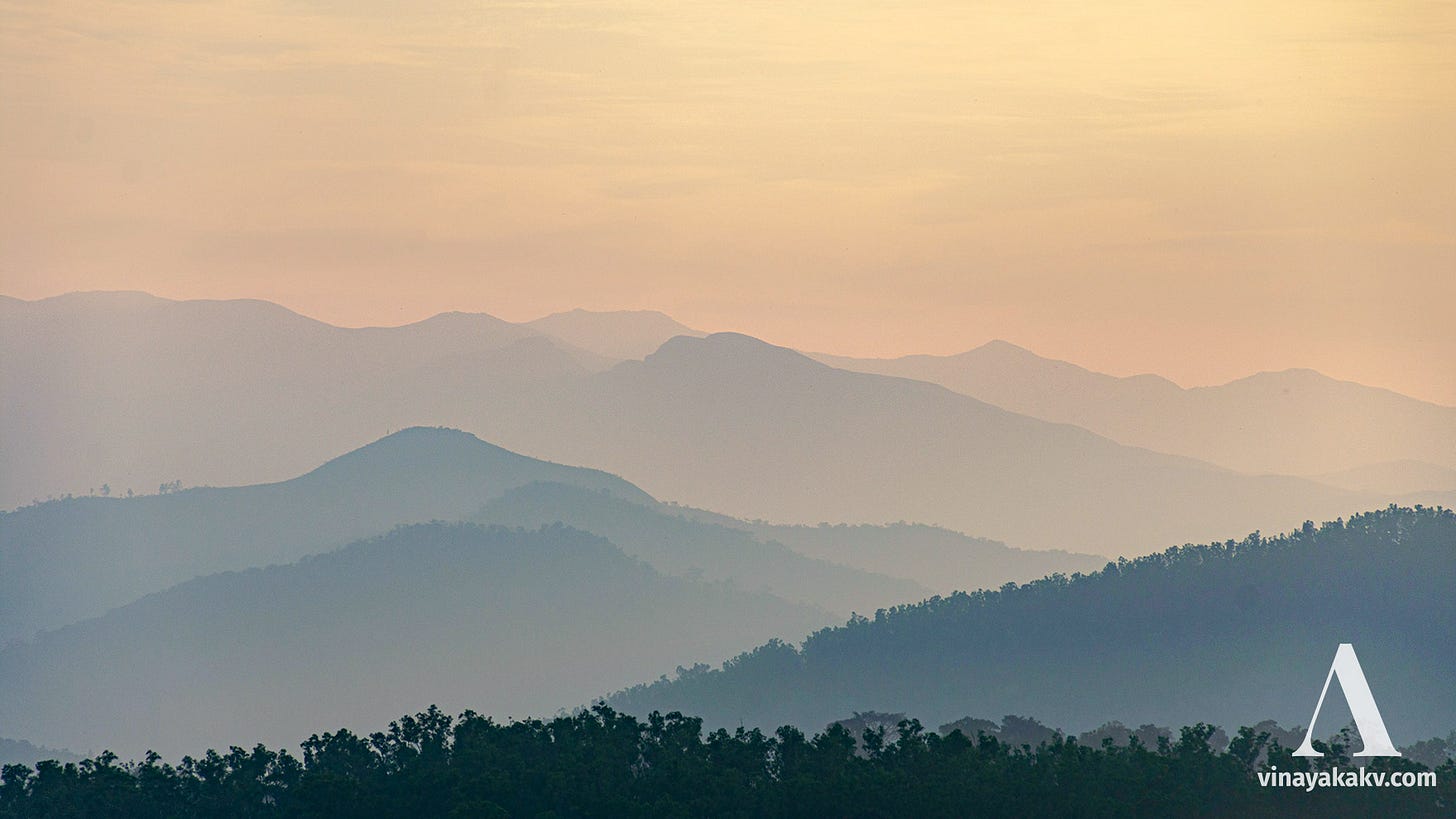The Missing Mountains
The mountains suddenly disappear upon the arrival of winter. What makes them so? let's find it out.
In one of my earlier posts, I was photographing the Western Ghats mountain range from the coastal city of Mangalooru, situated about 50km Line of Sight (LOS) away from them. Although the distance seems pretty small, the mountains are not visible year-round due to the atmospheric haze. This article will explore more about haze and its impacts on visibility.
The Difference
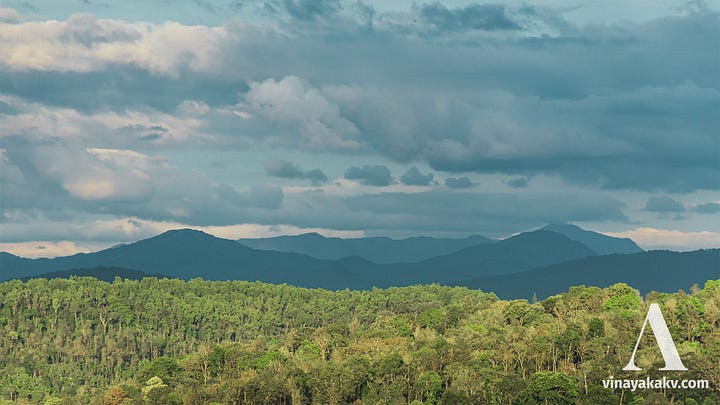
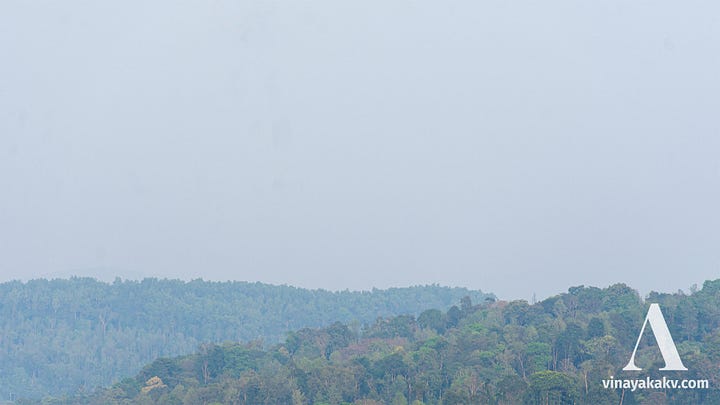
You can easily see the effect of haze on visibility in the above comparison. The blue mountain range visible at the last layer of the clear photo is the Chandradrona range of Chikkamagaluru, of which Mullayyanagiri is the highest peak (1930m, which also happens to be the highest peak in the South Indian state of Karnataka). The haze was low in the first photograph due to the unusually heavy Northeast monsoon rains. The hazy second photo was captured nearly one week after, with the effect of the haze clearly visible. The haze obscures the mountain range, masking it. It also contributes to the loss of contrast in the landscape, in general.
The Culprit -- PM2.5
The leading cause of the haze in the Indian subcontinent is the tiny particles in the atmosphere named PM2.5. The "PM" stands for Particulate Matter. The number 2.5 in the subscript refers to their size, in this case, referring to the particulate matter whose diameter is less than 2.5μm (For comparison, they are 30 times smaller than a single strand of the human hair). Their small size contributes to the greater scattering of the light particles, thus reducing visibility. Apart from the visibility, they also contribute to a wide range of health issues from respiratory illness to nonfatal heartattacks; the Apex court of India proposed a mini-lockdown in the national capital New Delhi due to high PM2.5 levels impacting the population.
The PM2.5 levels in India get gradually better during the onset of Southwest monsoon rains and the rains covering the entire country. Southern India enjoys a longer period of low PM2.5 levels than its Northern counterpart, as monsoon rains stay in the south for a relatively long period. As soon as the monsoon withdraws, the PM2.5 levels increase in North India, subsequently carried to South India by the winds. In the Northeast monsoons and the cyclones associated with them, parts of South India get relief from high PM2.5 levels for a shorter period.
There are many sources of PM2.5, ranging from natural causes like forest fires to human-made causes like industries. The Indo-Gangetic plains hosts many of the Indian industries and is the most polluted region of India; the rivers there, like Ganga and the Yamuna are highly water-polluted, and many cities in the basin are the worst (both in India and the world) in terms of Air Quality Index (which accounts PM2.5 into consideration in a large proportion).
The Effects
Haze Line
The haze does not exist from the surface to all the way above into the upper atmosphere. The boundary where the haze ends is called the "Haze Line." The boundary is marked by an inversion in lower-atmosphere temperature where the low-altitude air is cooler than it is in high-altitude (the natural trend is "the higher altitude, lower the temparature").
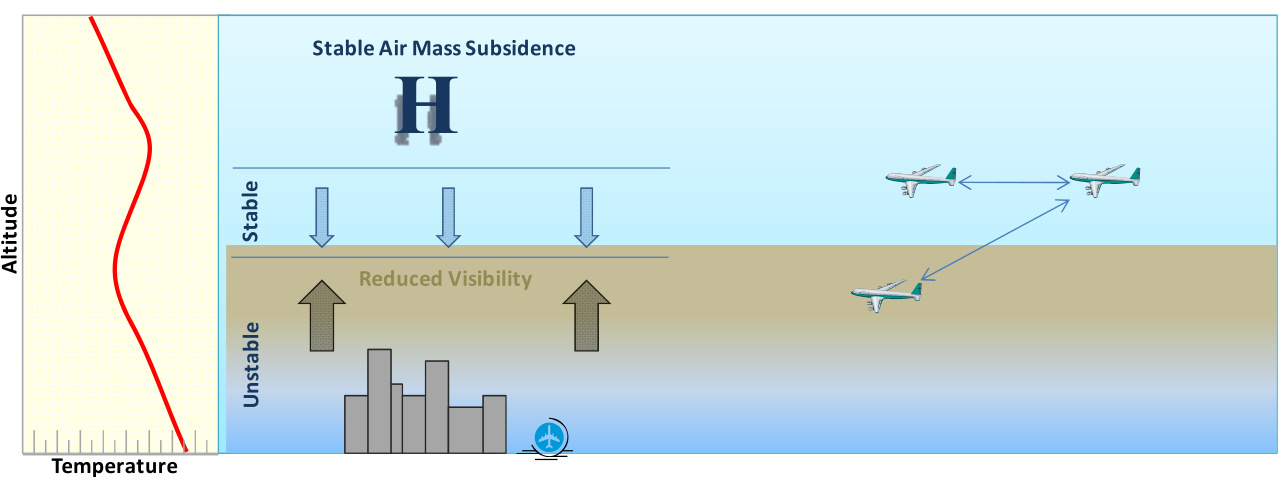
In late-morning hours, the haze line is so high in the sky that it can not be observed from the ground. Since airplanes fly above the haze line most of the time during their flight, the entry into the haze line and the view below can be easily seen.
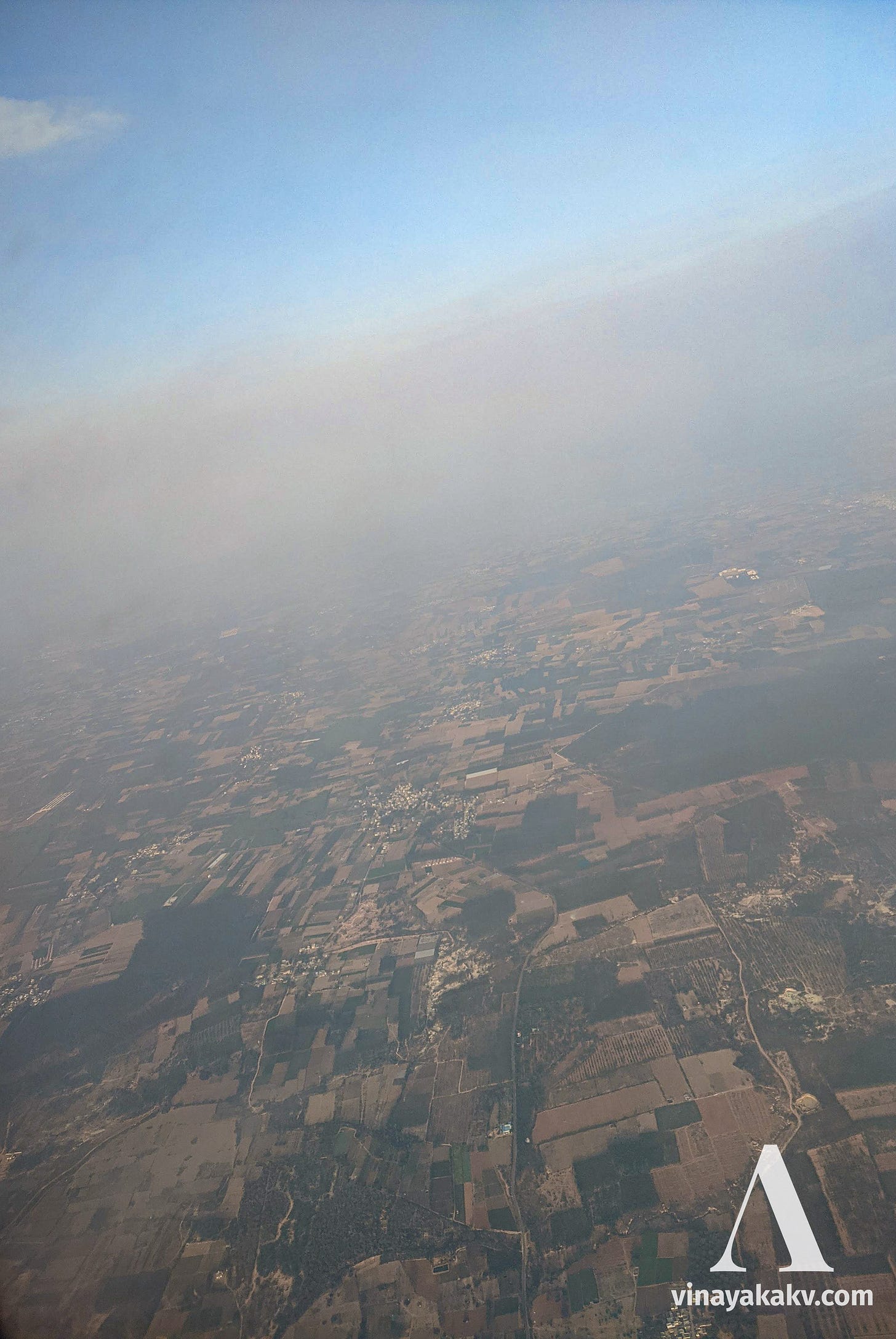
Once above the haze line, the sky appears blue and clear, and it is hard to observe below the haze line.
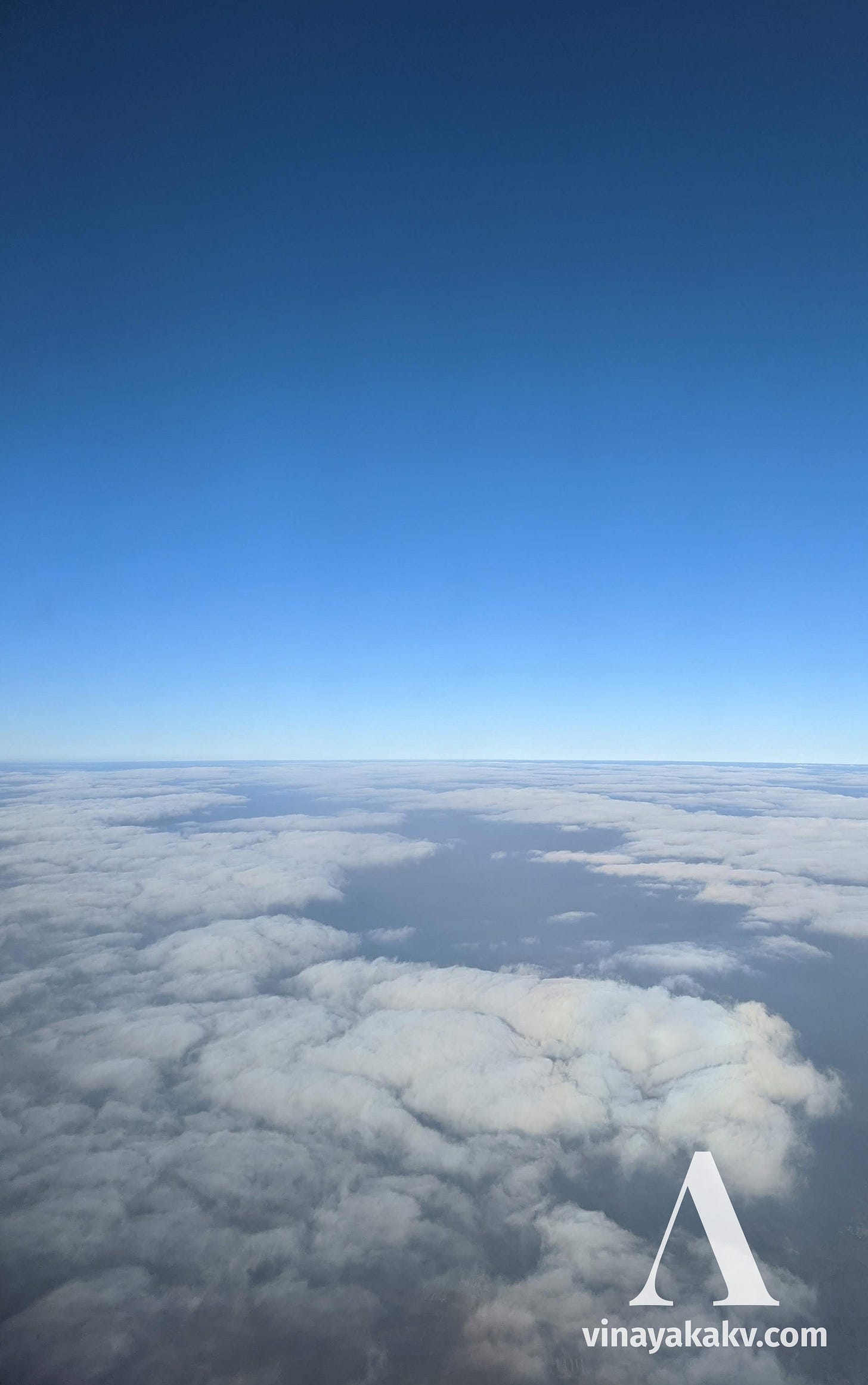
Sometimes, the haze line is closer to the ground. In that case, anything above the haze line looks clear.
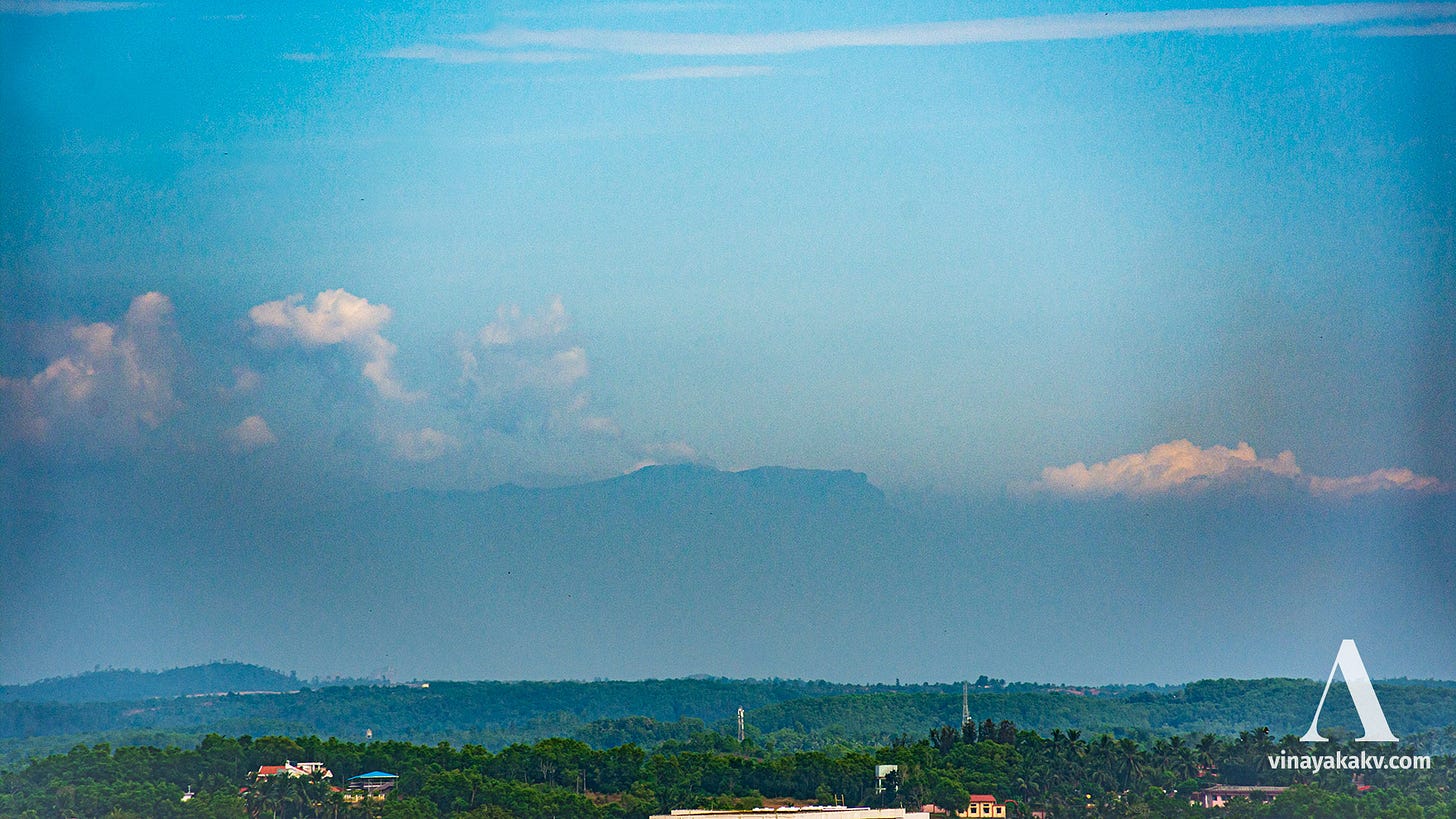
Morning Mists
The inversion altitude is much near the ground during early morning hours when the sun has just risen. During that time, the earth's surface is much cooler, and the air above is relatively hot due to its exposure to sunlight. The earth's surface takes more time to heat up when compared to the air mass above it, making the temperatures relatively stable. This is a very low altitude inversion. This inversion causes a beautiful sea of mist at its boundary; clear sky, and a less-haze atmosphere above it. As time progresses, the inversion layer slowly moves upwards. Once it disappears, it leaves behind a hazy atmosphere, where the visibility is reduced to a much greater extent.

The relatioship between high PM2.5 levels and morning mist is not clear. From my emperical observations, the less the morning mist it is, the visibility is more, suggesting low PM2.5 levels. If you know any research supporting this, please comment below.
Colored Sunsets and Mountain Layers
The presence of haze means more scattering of light. Thus, it makes the sunset more colorful and red. When the haze is moderate, the mountains with their foothills appear as stacked layers, as the visibility reduces as the distance increase.
Fixing the Haze
While the PM2.5 from natural sources can not be avoided, the human-made PM2.5 can be certainly regulated by enforcing air-quality standards on industries. Doing this not only benefits the visibility levels on the ground, it also improves the health of the citizens, making their life more enjoyable and enduring.
The high levels of PM2.5 seem to be a problem restricted to several places like India, China, and some African countries. These countries need to understand that the well-being of their citizens in terms of health is more important than the cash inflow.
When it comes to photographing landscapes, taking pictures in RAW format with Polarizer filter on, and using the "Dehaze" function in Adobe's RAW pre-processor, followed by some color and lightness correction, seems to do well in low-haze conditions. However, it can dramatize the photos in some situations.

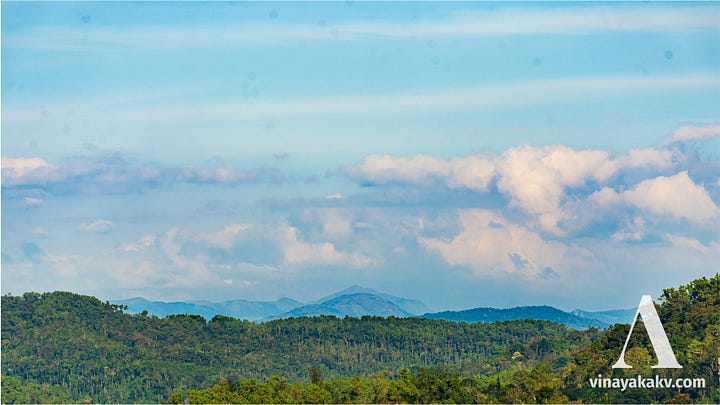
The better way to avoid haze is to be at the mountain peak in the very early morning and capture the distant mountains with inversion layers. This would be great both in terms of the photographic effect of inversion, and the visibility.

Another option would be to visit the mountains during the "Monsoon-break" in India when the monsoon rains reduce typically for a week. While this is good for visibility, not all of the mountains would be clearly visible as they would be cloud-capped.
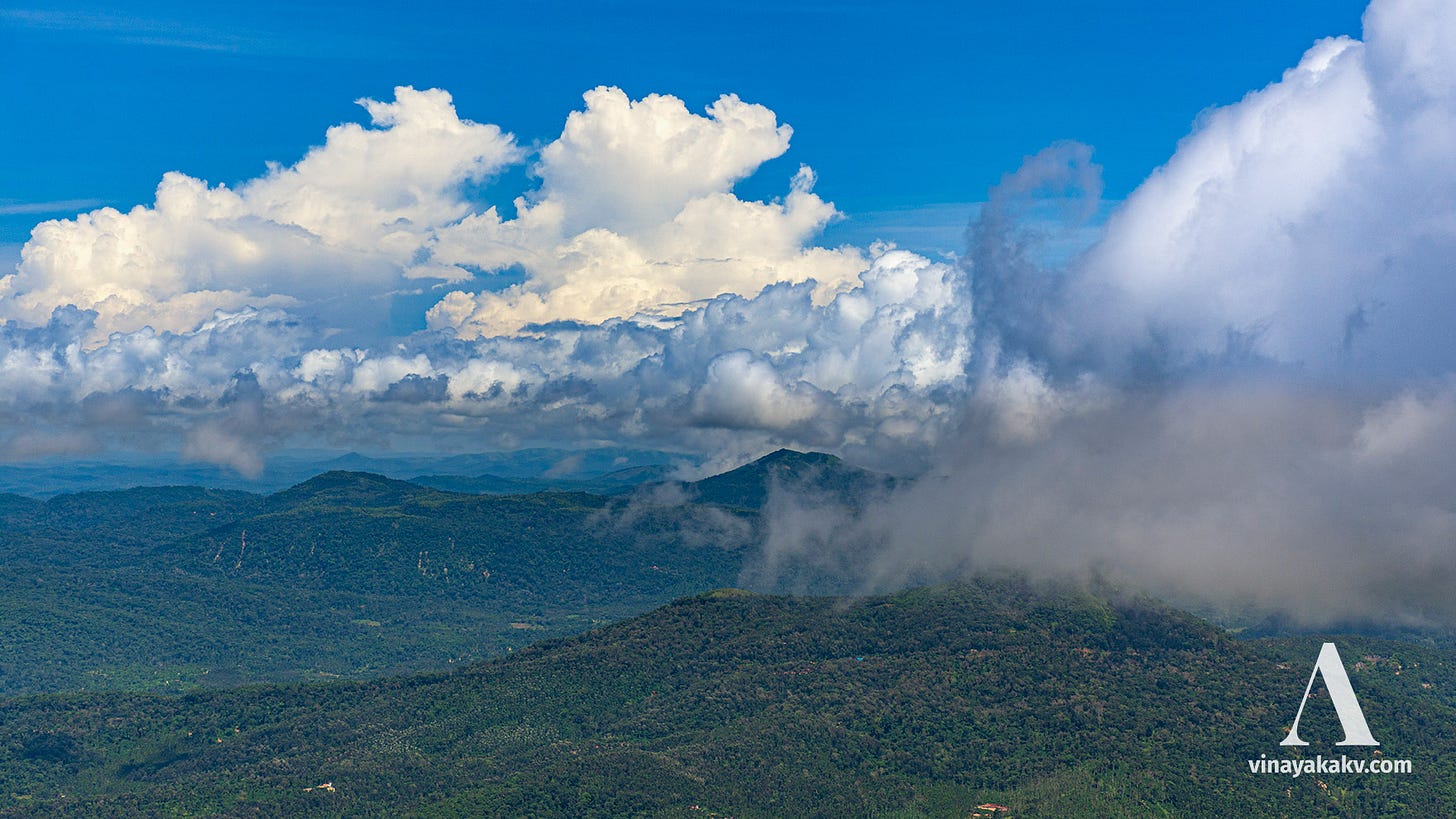
Final Thoughts
Many people in South India think that the problem of haze and excess PM2.5 in air is a problem restricted to North India. Whenever the haze occurs, it is commonly thought as mist 😅. It is important to realize that they are separate phenomenon, although one might influence the other during the winters. The people should urge the government to make "breathing the clean air" as a fundamental right, and government must take all steps to ensure it, prioritizing it over any economical concerns.
Further Resources
earth.nullschool.net -- An interactive view of weather data with around a 5-day forecast and a decade of history, all with 1-hour granularity. An excellent resource for observation and research. The "PM2.5" overlay under "Particulates" section can be used as a proxy to Air Quality Index (AQI) since AQI calculations vary across the countries -- lesser PM2.5 level are better.
Evaluating the Impacts of Haze on Air Traffic Operations -- The title is suggestive of the content. Figure 2.2 (page 2) describes the haze layer and its association with temperature.
Layers of the Atmosphere -- A US National Weather Service article describing the layers of the air. The second image illustrates the temperature variation in the atmosphere, suggesting the trend "the higher altitude, lower the temperature" in the lower atmosphere (the "Troposphere").
IQAIR -- A good resource for monitoring AQI and PM2.5 levels across the globe. Provides a AQI map similar to earth.nullschool.net and summary data aggregated across a year.
animate-earth-nullschool-- Source code for animating earth.nullschool.net footage used to make animations for this post.




